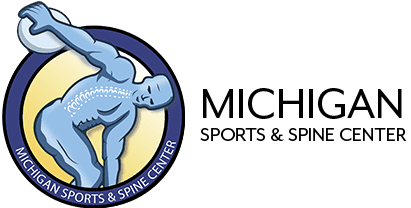4 Tips for Getting BACK into Exercising After Quarantine

Have you recently had a hiatus from your workout routine? You’re not alone! MSSC is here to help you ease back into your fitness goals.
So, how do you get back into exercise after a break? Follow these four tips to get you back on track.
Before you try any of these tips. Be sure you listen to your body! If pain/discomfort persists for two weeks, It’s time to see a specialist CLICK HERE to contact us and schedule a consultation today.
1. Proper warm-up and cool down
Following a regular stretching routine will help you maintain both flexibility and strength while also decreasing the chances of injury or reinjury.
*Remember: The #1 cause of REINJURY is an existing injury.
- Warm up your muscles so you don’t get a cramp.
- Start with light activity, such as walking, before exerting strenuous exercise.
- Don’t forget: Stretching or a cool-down after your workout is just as important as stretching or a warm-up before.
For mobile access to warm-ups or cool-downs created by our skilled Physical Therapist, Faith Moore, and recommended by Dr. Pierce, Follow Us on Social Media: Facebook and Instagram.
Tune in to ASK THE DOC on Facebook Live every Wednesday @ 3:30 PM EST. Watch the latest episode by clicking here!
2. Proper attire
Have you been wearing those same sneakers every day? It might be time to look into a new pair.
Proper support from your shoe wear is crucial for injury prevention, especially pertaining to ankles and knees. It might be time to look into new shoe wear if:
- You’ve had your running shoes for longer than six months or 300 miles: If you want to keep your car running well for hundreds of thousands of miles, you regularly change the oil. If you want to prevent injuries and keep your joints healthy, you should regularly change your running shoes.
- Your feet ache during or after your run
- You’re getting blisters or calluses
- You develop plantar fasciitis
- You can’t get your shoes off without completely loosening the laces: Exercises may increase blood flow to your heart and lungs, but they can also decrease blood flow to your hands and feet, sometimes causing them to swell. If you find yourself needing to loosen all of your laces after a run, you may need a wider shoe. With that being said, be careful going up by width and ensure your heel sits comfortably in the shoe without slipping out.
- You develop tendonitis when you run:
A tendon attaches muscle to bone. When this connective tissue becomes inflamed, you can develop a condition called tendonitis, which is characterized by tenderness, pain, and swelling.
3. Proper preparation: Nutrition and Hydration
Maintaining your body in a fully hydrated state is essential for both your health and performance when exercising. If you are dehydrated, you will have a reduced blood volume and less fluid to form sweat.
How much do you need to drink to be properly hydrated? There are several factors to consider, including heat, humidity, sweat rate, and length of time of activity. The following is a guideline from the American Council on Exercise on how much water to consume before, during, and after exercise.
- 17-20 ounces of water 2-3 hours before exercise
- 8 ounces of water 20-30 minutes before exercise or during your warm-up
- 7 -10 ounces of water every 10-20 minutes during exercise
- 8 ounces of water within 30 minutes after exercise
Muscle Cramping and Treatment
Cramping occurs when there is a tightening of the muscle, causing pain. Stretching the muscle will often bring relief. Cramps are frequently quite painful, and the athlete may need help. One of the best ways to help resolve a cramp is by massaging the muscle while it is stretched. Drinking plenty of water is also advised. If cramping is severe, quick doses of sodium or potassium can also help. This can include items such as mustard, pickle juice, bananas, or salt packets, if available. If severe cramping continues, the athlete should be seen by a physician. Athletes prone to muscle cramps should make an extra effort to hydrate before and during activity.
Food for Fuel
Ideally, fuel up two hours before you exercise by:
- Hydrating with water.
- Eating healthy carbohydrates such as whole-grain cereals (with low-fat or skim milk), whole-wheat toast, low-fat or fat-free yogurt, whole grain pasta, brown rice, fruits, and vegetables.
- Avoiding saturated fats and even a lot of healthy protein — because these types of fuels digest slower in your stomach and take away oxygen and energy-delivering blood from your muscles.
If you only have 5-10 minutes before you exercise, eat a piece of fruit such as an apple or banana.
Education and prevention can go a long way in keeping athletes healthy, injury-free, and on the field, playing the sport they love!
4. Start small and add to your routine!
Don’t jump straight back into the same training schedule as you had before.
If you try to do too much right at the beginning, you risk getting demotivated by the mammoth task you’ve set yourself and end up giving up when it all becomes too much. Even if you manage to stick to your planned schedule, you risk overdoing it, and you might even injure yourself. So, to begin with, take it easy.
Even one gym session a week is a reasonable goal if you’re just starting out.
In fact, don’t feel like you have to hit the gym at all, to begin with. Even getting outside for a brisk 20-minute walk will make a massive difference when getting back to exercise after a break.
The key to sustainable change is to start small and build up from there. So, resist the “all or nothing” mentality and plan a realistic schedule to ease you back into exercise after a break.
*IMPORTANT: At Michigan Sports and Spine Center, we are all about injury PREVENTION. If you are experiencing any of the following, you should make an appointment with a specialist:
- Pain or discomfort that has worsened or not improved over the past two weeks.
- Radiating pain — Normal soreness is okay. Pain that radiates, for example, down your leg, is not.
- Locking of the joints
If you’re experiencing any of the above symptoms or have questions, please don’t hesitate to contact us for an Online or In-Office Consultation with a Top Sports Medicine Physician in Southeast Michigan, Dr. Jeff S. Pierce,
The initial stages of getting back to exercise after a break can often be a bit of a struggle, but getting started is often the hardest bit. If you follow these four tips, it will be easier to get back into exercise after a break.
And if you need a little extra help, click here to download Dr. Jeff Pierce’s easy-to-follow full-body warm-up and cool-down to get you back in the exercise habit. These stretches and exercises can be done at home with no equipment and no gym membership necessary!
*Listen to your body! If pain/discomfort persists for two weeks, It’s time to see a specialist.




